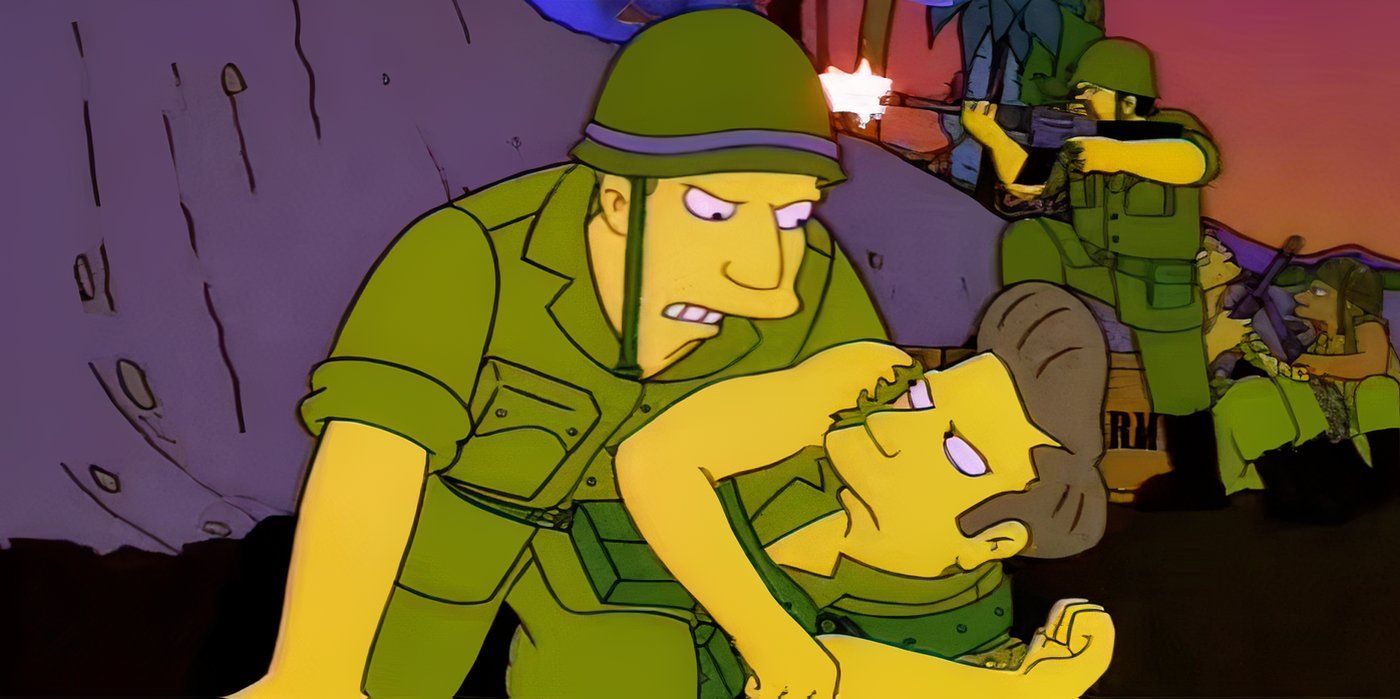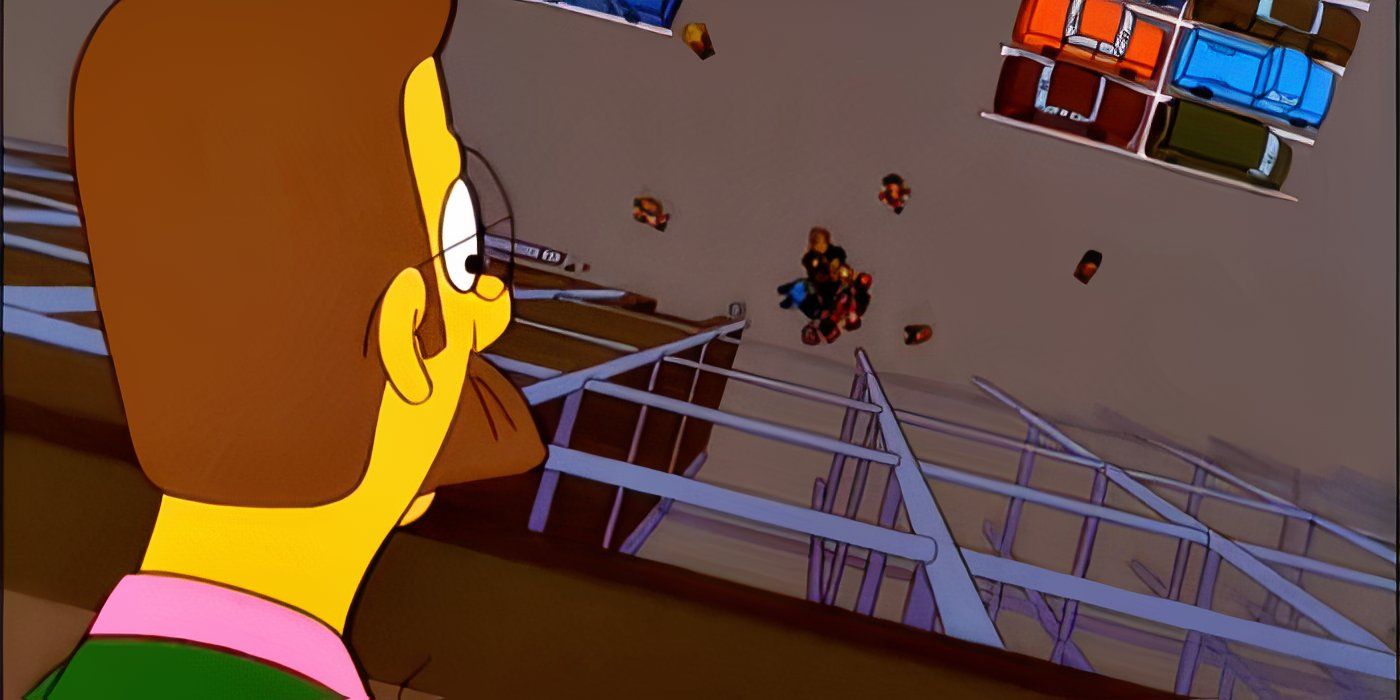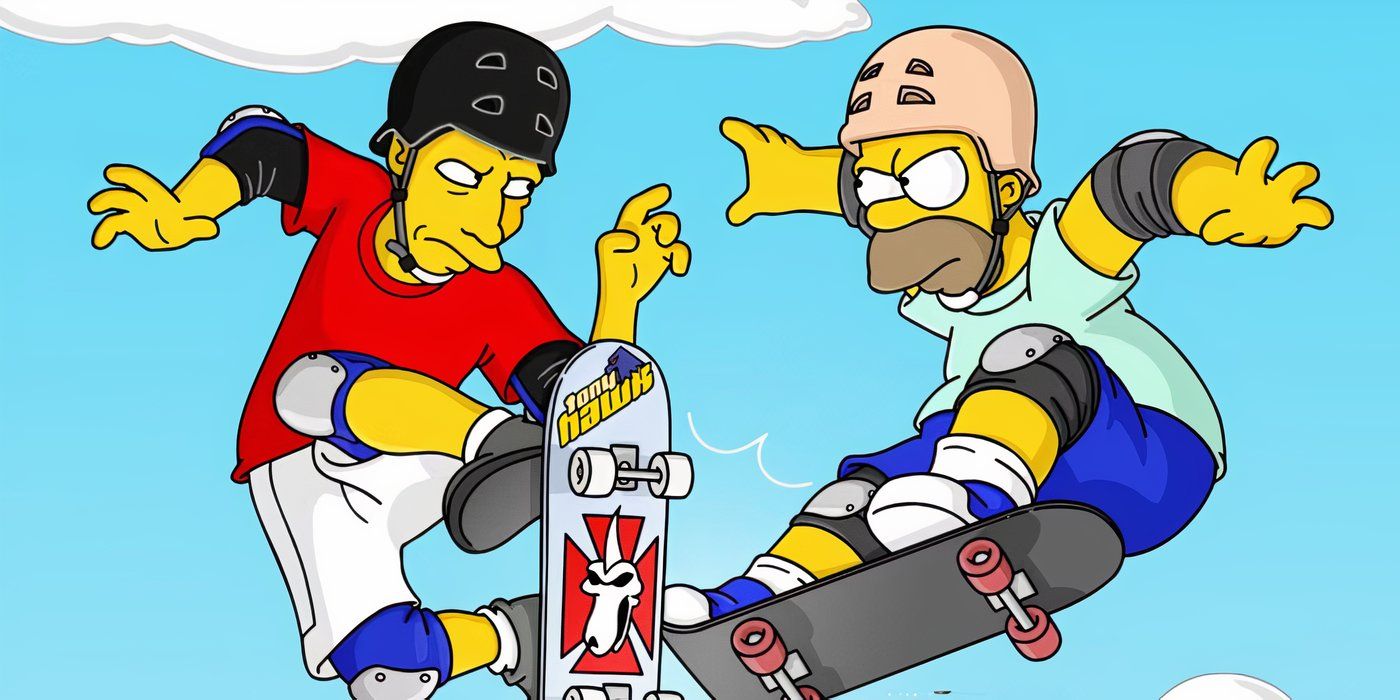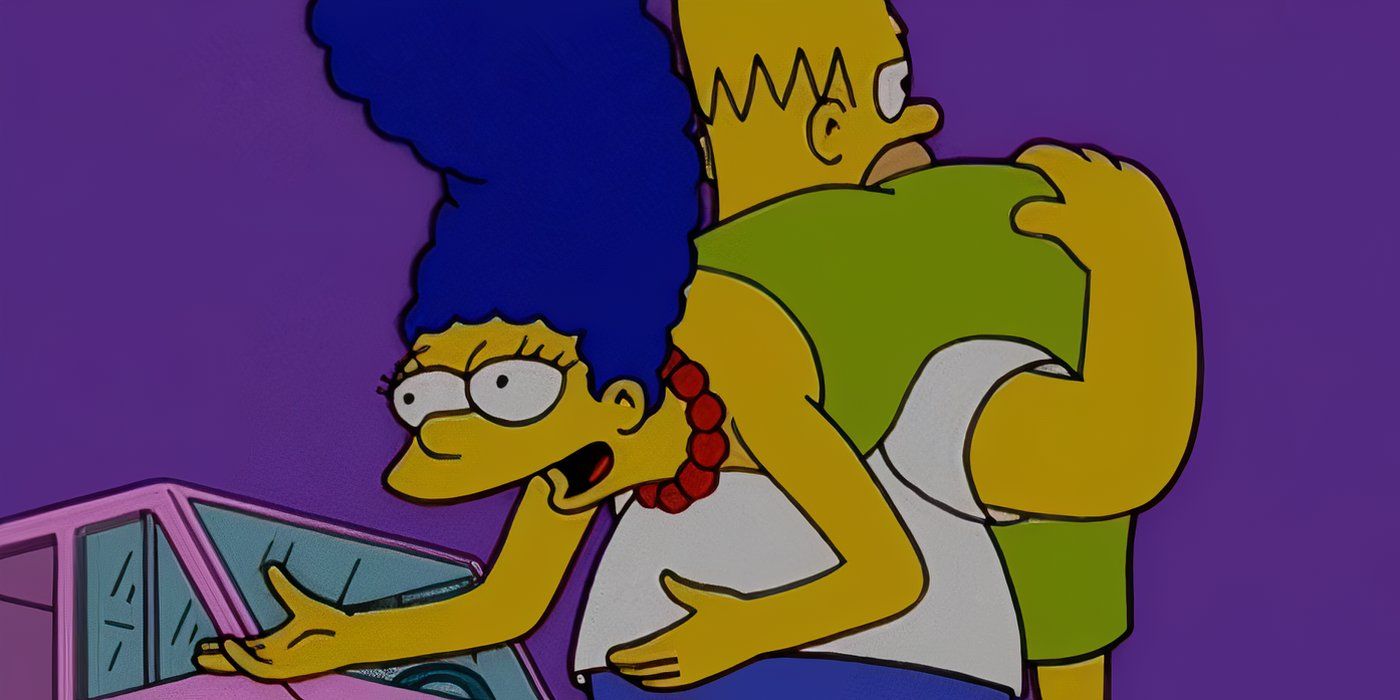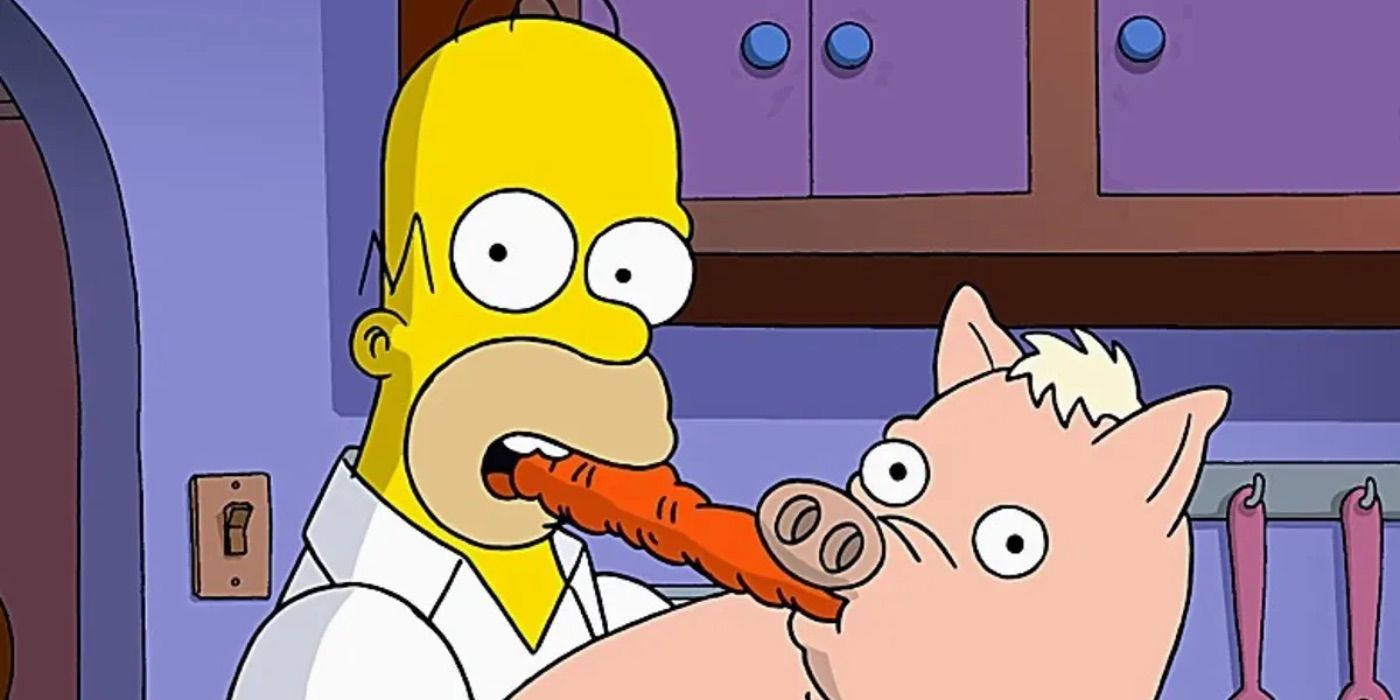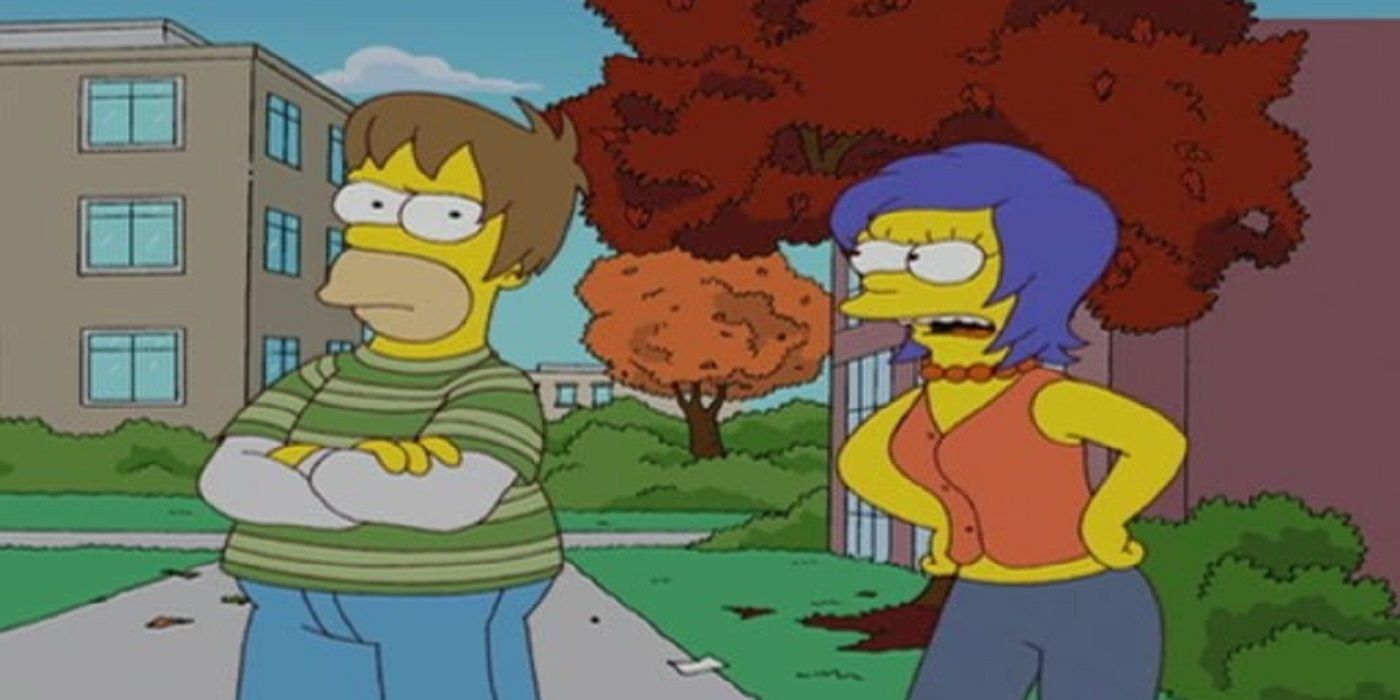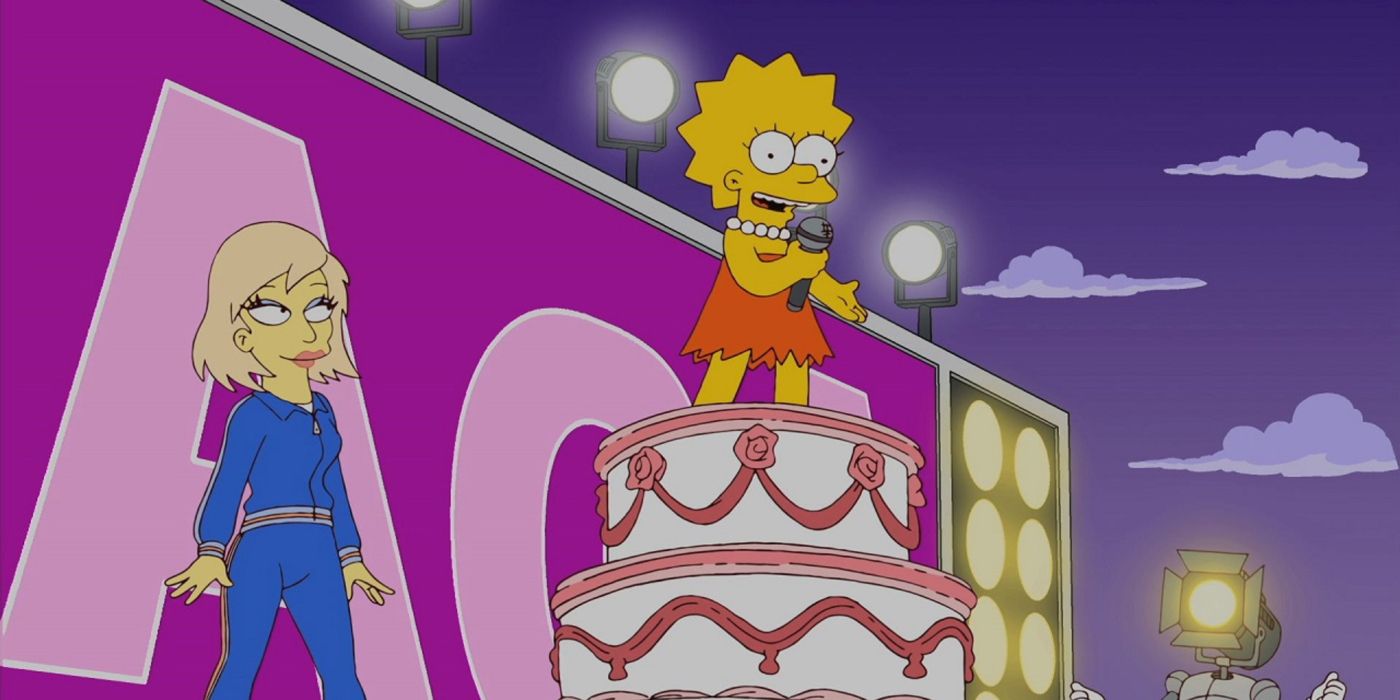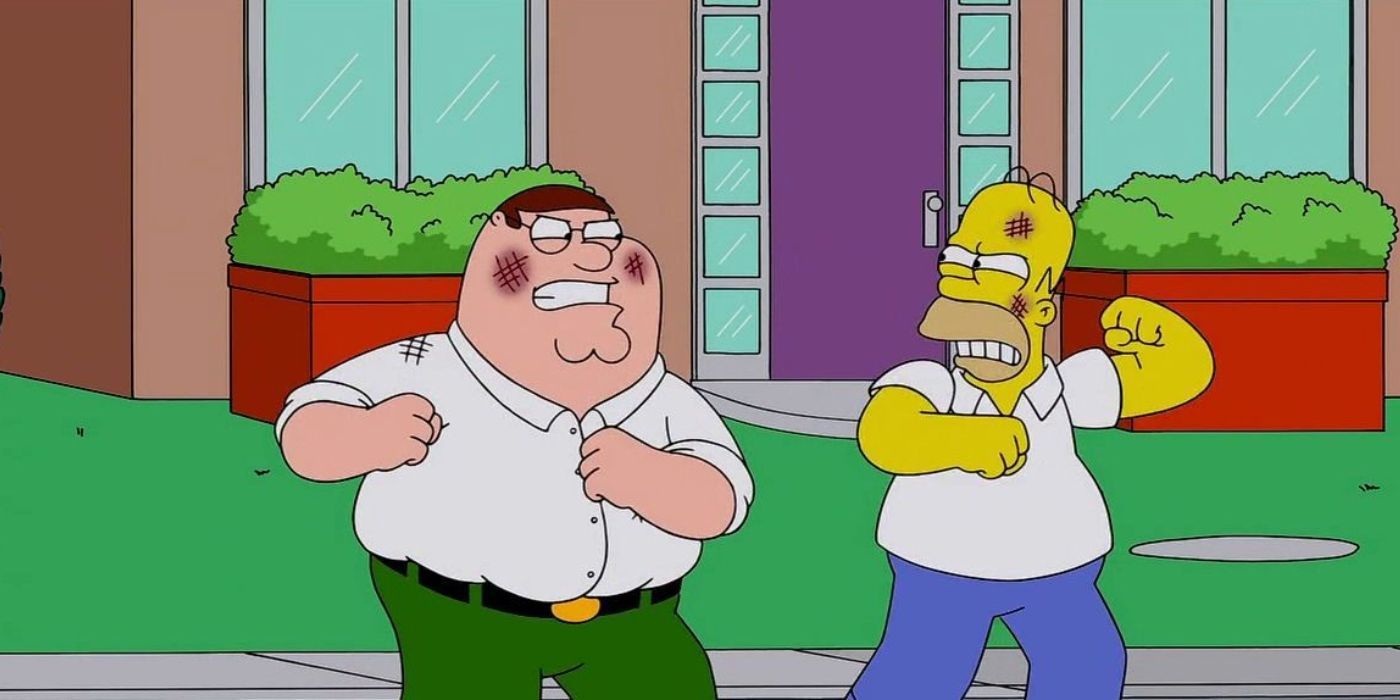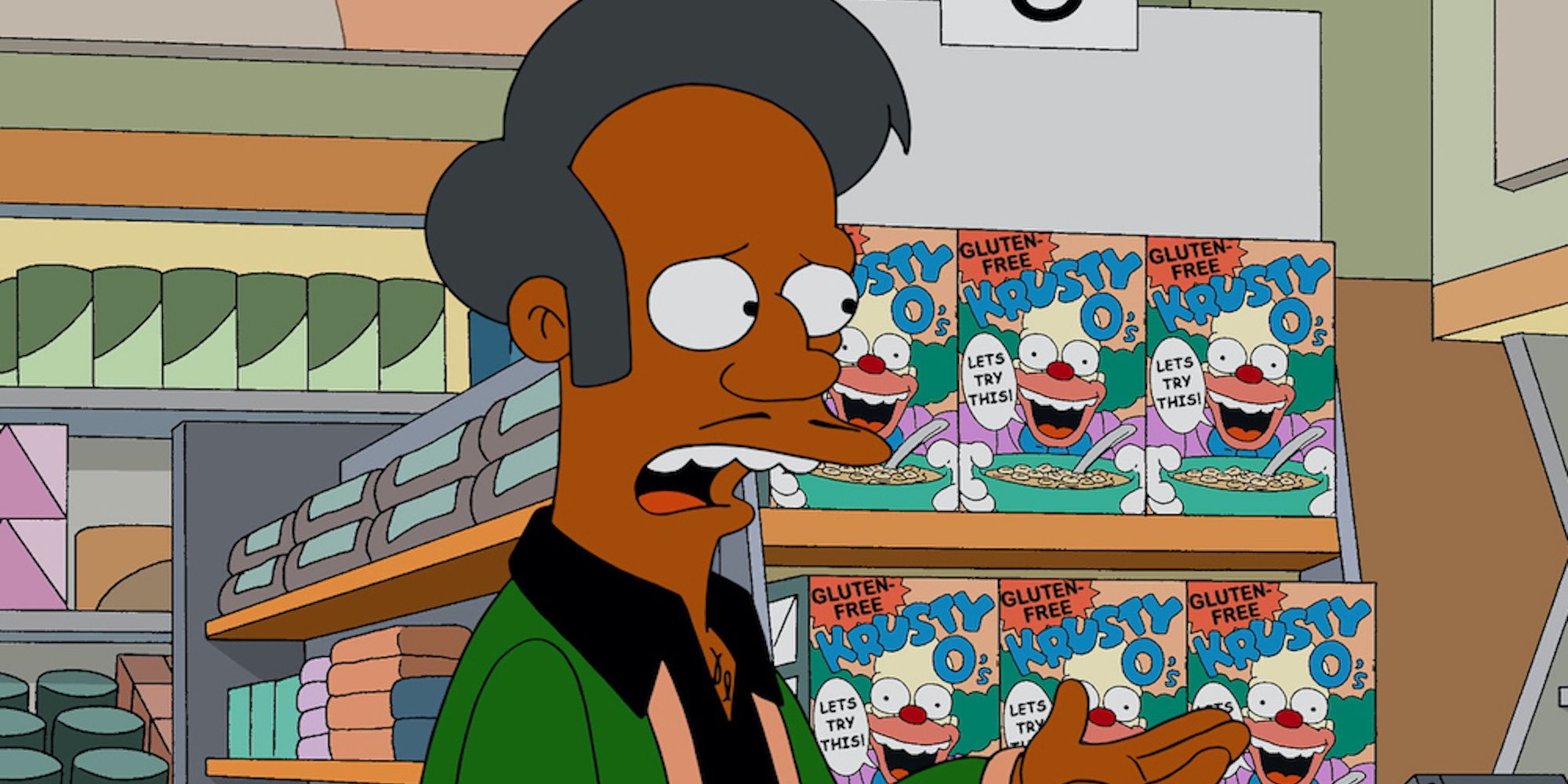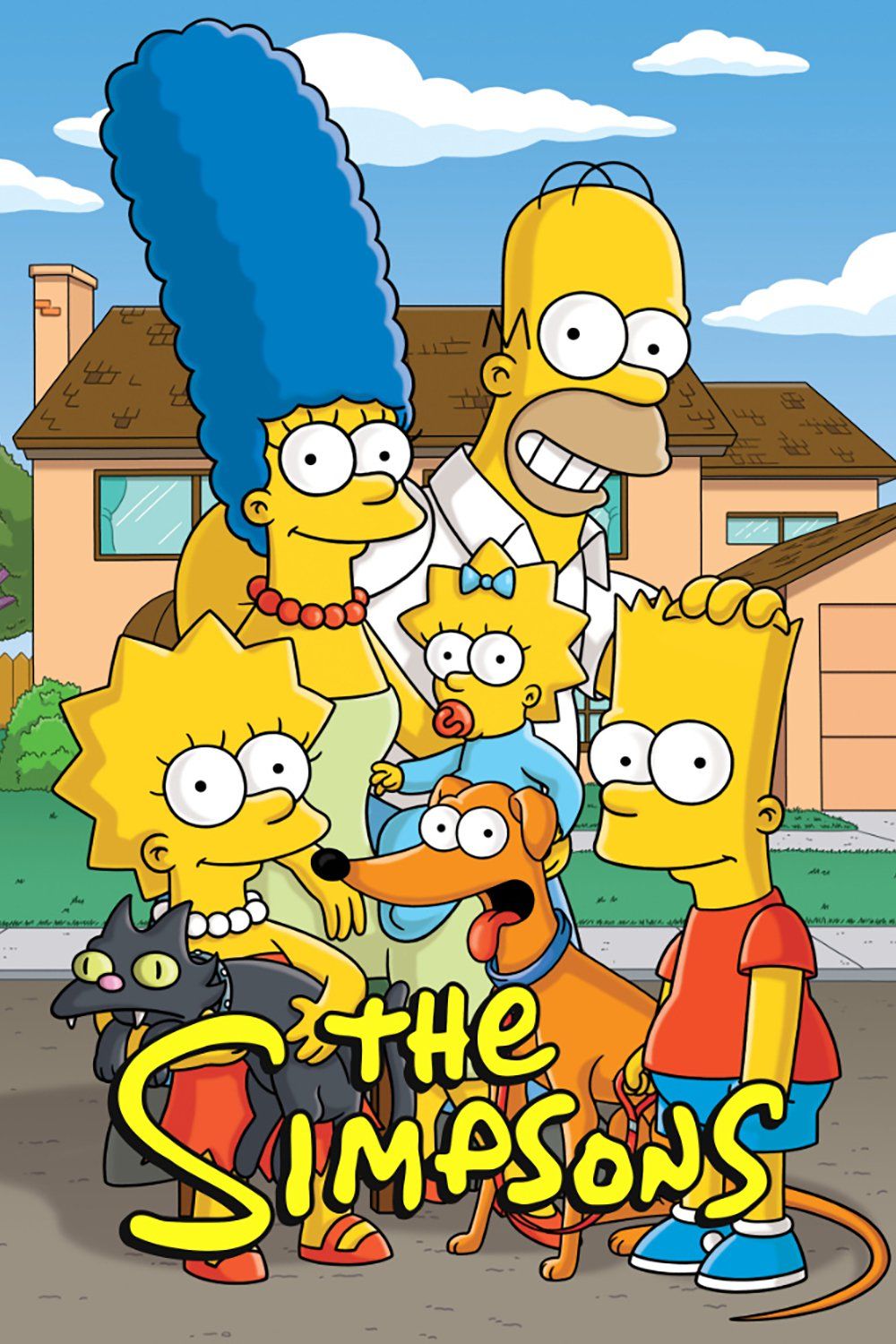Summary
- The Simpsons has had a long and storied run, with many memorable seasons and episodes. However, as the years went on, the quality of the show began to decline, and many viewers found themselves no longer enjoying the once-beloved series.
- Maude Flander’s death in Season 11 felt needlessly cruel and contributed to the show’s decline in quality.
- The 300th episode: The Season 14 episode “Barting Over” was marketed as the 300th episode but was lackluster, leading viewers to question the show’s continued renewal.
The Simpsons was one of the most beloved animated series ever made, but it must be admitted that the show’s glory days have long since passed, and many viewers have quit watching altogether. While Homer, Marge, Bart, Lisa, and Maggie all hold a special place in popular culture, the series has gone through many ups and downs since it premiered in 1989. As a satire of dysfunctional middle-class American lifestyles, The Simpsons has had countless classic moments, but just as many that made viewers want to stop watching entirely.
Even during The Simpsons’ most acclaimed early seasons, some moments rubbed viewers the wrong way and made them quit watching. From Principal Skinner’s true identity to the mystery of who shot Mr. Burns, it was impossible to please every viewer, and occasionally, audiences reached their breaking point. While every lapsed viewer will have a different answer for the moment they quit watching The Simpsons, plenty others have continued to enjoy the misadventures of Springfield’s most famous and excitedly look forward to each upcoming season.
10 The Climax Of “Who Shot Mr. Burns”
Season 7, Episode 1, “Who Shot Mr. Burns?”
Few moments from The Simpsons’ Golden Age made viewers want to quit the show, but one notable exception was the Season 7 premiere, “Who Shot Mr. Burns (Part 2.)” This was truly a love-it-or-hate-it scenario, as the mystery behind who shot Mr. Burns kept viewers guessing during the break between seasons. With the main suspects being Homer Simpson and Wayne Smithers, the revelation that it was actually the baby Maggie Simpson felt too ridiculous for some and made them quit watching altogether.
Maggie’s role in the shooting felt like a joke to audiences who had taken the cliffhanger seriously and even entered Fox’s phone-in contest, where viewers called up and guessed who the culprit could be. While the climax of “Who Shot Mr. Burns?” may have rubbed some viewers the wrong way, it was also among the most unique things that The Simpsons’ writers tried during the earlier seasons. As a hilarious homage to Dallas’ mystery of “Who Shot J.R.?” this story highlighted the referential nature of The Simpsons and how it simultaneously commented on and was part of popular culture.
9 The Simpsons Reveal Principal Skinner Isn’t Principal Skinner
Season 9, Episode 2, “The Principal and the Pauper”
Despite being a hilarious episode of The Simpsons, “The Principal and the Pauper” was also a turning point for the series and signaled the beginning of the end of The Simpsons glory days. With the revelation that Principal Seymour Skinner was not who he said he was and had been living under a false identity, the very foundations of Springfield were shaken, and from that moment on, nothing was off the table. As Principal Skinner revealed he was actually Armin Tamzarian, some viewers felt this did his character a disservice.
The explanation of how Armin became Principal Skinner felt like it messed with the continuity of the series as basic character traits, like his relationship with his mother, had to be reconsidered. This felt like the moment The Simpsons “jumped the shark” and allowed for the increasingly ridiculous and unbelievable storyline to be explored. While there were still plenty of great seasons ahead, for many, this felt like the time to say goodbye to The Simpsons.
8 Killing Maude Flanders
Season 11, Episode 14, “Alone Again, Natura-Diddily”
As the world of The Simpsons grew and developed over the seasons, the show became not just about the Simpson family but started to include the entire population of Springfield. One major recurring character was Maude Flangers, the good-natured Christian wife of Ned. First introduced in Season 2, Maude was part of the fabric of Springfield, and that’s why, when she was unceremoniously killed off in Season 11, some viewers decided it was time for them to also bid the show farewell.
While deaths in The Simpsons were not always permanent, Maude’s death was much more consequential and had a significant impact on Ned’s character as he tried to traverse life as a widow. Maude’s death felt like a mistake, as it did not add much to the overall narrative of the series and felt needlessly cruel. The fact that Maude died as a result of being shot by a t-shirt canon played into The Simpsons’ tendency to become more mean-spirited as the seasons went on, as the show gradually lost its poignant and more heartfelt qualities.
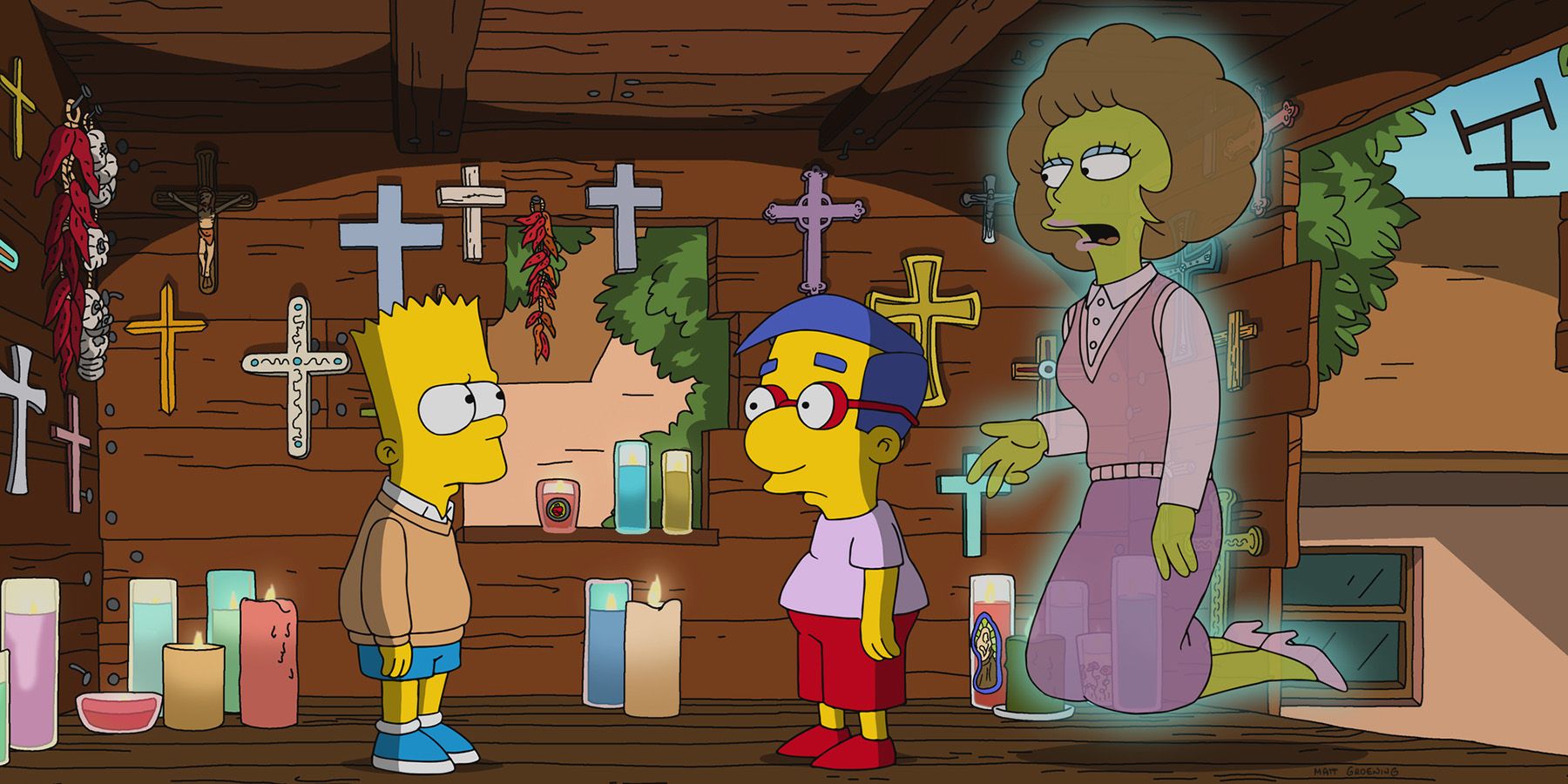
Related
The Simpsons: Why Maude Flanders Was Killed Off
The Flanders got their dose of tragedy when Maude was killed off in season 11 of The Simpsons – and it was due to some behind-the-scenes problems.
7 The Special 300th Episode
Season 14, Episode 11, “Barting Over”
The Season 14 episode of The Simpsons “Barting Over” was marketed as the 300th episode of the long-running animated series, despite actually being the 302nd aired episode in terms of broadcast order. This felt like a significant moment that deserved recognition; however, the lackluster nature of the episode made plenty of viewers realize that the series’ glory days were already long gone. The problem was not that “Barting Over” was terrible; it was that it was such a mediocre episode that it led to audiences questioning why the show was still being renewed.
“Barting Over” was about Bart being emancipated from Homer and Marge and moving out of their family home. From here, Bart encountered several celebrity guests, including pro skateboarder Tony Hawk and the members of the pop-punk band Blink 182. While this was not out of the ordinary for The Simpsons, the episode reeked of celebrity worship and made viewers pine for the days when unique characters with compelling storylines were created for guest stars instead of a litany of disposable cameo appearances.
6 Putting the Blame On Marge
Season 15, Episode 15, “Co-Dependents’ Day”
While Homer Simpson’s absurd, hectic, and downright idiotic personality was a major contributing factor to the success of The Simpsons, the show’s early days also depicted him as a loving husband who would always do what was right for his wife and kids. However, over the years, this aspect of Homer started to slip away, and he began acting in ways that made him downright unlikable. This slow decline reached a tipping point in the Season 15 episode “Co-Dependents’ Day.”
This was the moment when Homer got in an accident while drunk driving and overturned his car. Rather than take responsibility for the incident, Homer switched places with a drunken Marge and allowed her to believe that she was the true cause of the accident. This action was so far removed from the loving husband that Homer was in the early seasons and felt so out of step with his previously established character traits that some viewers quit watching entirely.
5 The Simpsons Movie (2007)
Released between Season 18 & 19
By the time The Simpsons Movie was released, The Simpsons had already been on the air for nearly 20 years, and it was exciting to finally see Springfield’s most famous family on the big screen. By this point, the quality of the series had dipped significantly, and many audiences had already grown tired of The Simpsons. However, many lapsed viewers returned for The Simpsons Movie, and it felt like the writers had recaptured some of that old magic and reconnected with the type of humor that made the series the pop culture phenomenon that it became.
The Simpsons Movie was a hit with audiences and critics, but it also felt like something of a last hurrah, and many viewers agree that this would have been a great way to end the show once and for all. For many, this actually was the case, as, despite enjoying the movie, it felt like there was nowhere to go from there. The Simpsons Movie was a fantastic moment that proved the series’ viability on the big screen, but it also felt like a nice point for audiences to respectfully quit watching and go out on a high.
4 When The Retconning Became Too Much
Season 19, Episode 11, “That ’90s Show”
When an animated series has been running as long as The Simpsons, it starts to run into some problems regarding continuity. This was exactly what happened with the Season 19 episode “That ’90s Show,” which retconned Homer and Marge’s early relationship to be set in the 1990s. Because The Simpsons utilized a floating timeline where the years continue as normal, but the characters never age, it meant that eventually, the original version of Homer and Marge’s romance during the 1970s no longer made sense.
Instead, “That ’90s Show” depicted Homer and Marge as a young couple during the mid-1990s, and this was a breaking point for some viewers. Not only did the episode mess with the previously established story, it also felt strange to witness Homer growing up in an era that The Simpsons had already existed in. When once young viewers had the realization that they were actually catching up with Homer in age and many had already passed him out, it felt like an appropriate time to quit watching.
3 Lisa, The Little Monster
Season 23, Episode 22, “Lisa Goes Gaga”
Guest stars have been a cornerstone of The Simpsons since practically the beginning, with some of the best episodes based on them. Episodes like “You Only Move Twice” from Season 8 with Albert Brooks as Hank Scorpio have gone down in Simpsons’ history as among the finest in the entire show’s run. Celebrities playing themselves were also nothing new, with the first being the American jazz singer Tony Bennett in the Season 2 episode “Dancin’ Homer.”
However, as the years went on, the celebrity guest appearances began to feel less significant, and instead of being a nice addition to a great episode, the celebrity appearances became the entire point of the episode. For many viewers, this reached a breaking point in the Season 23 episode “Lisa Goes Gaga.” This was the episode where Lady Gaga helped Lisa out of her depressed state and taught her the meaning of happiness, which, ironically, left countless viewers incredibly upset as they felt TheSimpsons cameos had become soulless over time.
2 The Family Guy Crossover
Family Guy: Season 13, Episode 1 “The Simpsons Guy”
On the same day that The Simpsons premiered its 26th season, Homer, Bart, and the rest of the family also appeared in another Fox animated sitcom when they had a crossover with the Season 13 premiere of Family Guy. This 44-minute special episode involved the Simpson family staying with the Griffins after they had their car stolen, and it was jarring to witness the two distinct animation styles clash. The reviews were mixed, and for some viewers, it was enough to call it quit on The Simpsons as they felt this crossover represented a creative low point.
“The Simpsons Guy” included many classic Simpsons characters interacting with the characters from Family Guy, and while this may have sounded like a good idea on paper, in its execution, it did both series a disservice. This crossover felt like it was made without a true purpose, and it took every opportunity to just shoehorn in as many crossover gags as possible. The episode was a lackluster addition to the history of The Simpsons, and it was hard to shake the feeling that it should not have been made.
1 When Hank Azia Bowed Out As Apu
Season 29, Episode 1, “The Serfsons”
The Kwik-E-Mar proprietor, Apu Nahasapeemapetilon, was introduced in the very first season of The Simpsons and was one of the most significant of all Springfield residents. With many Apu-centric episodes and a fully developed backstory, Apu meant a lot to viewers, but over the years, some became critical of his racial representation. Apu was voiced by the white actor Hank Azaria, and, especially following the release of the documentary The Problem with Apu, the question of whether it was appropriate to continue including the Indian character in the show became a major talking point.
Eventually, the controversies around Apu’s representation became too much, and Azaria stepped down from the role. Apu’s last appearance in a speaking role was in the Season 29 episode “The Serfsons,” and following this, he appeared as a silent background character. Although the argument that Apu propagated racial stereotypes had plenty of merit, for some viewers, seeing a beloved character taken off the show felt like a step too far, and they gave up on The Simpsons entirely.
